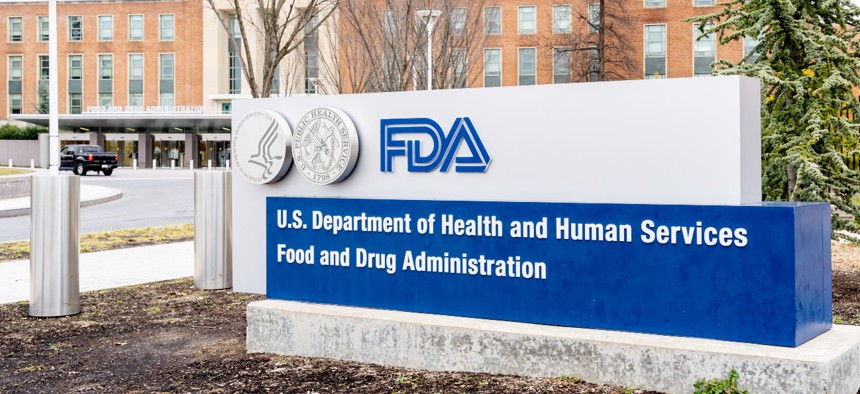
JHVEPhoto / iStock.com
Watchdog: FDA Needs a Central Workforce Plan to Help Meet Public Health Mission
The agency faces stiff competition from private sector employers, said the Government Accountability Office.
The Food and Drug Administration should create an agency-wide strategic workforce plan, especially for medical product staff, a watchdog reported recently.
As of fiscal 2020, the FDA had a workforce of over 18,000 employees, and over 45% worked in the agency's three medical product centers: the Center for Biologics Evaluation and Research, the Center for Drug Evaluation and Research, and the Center for Devices and Radiological Health. Recruitment and retention among medical product staff has been a long-term challenge, despite the fact that the agency has several hiring flexibilities. A new report from a watchdog touches on those issues, but focuses on coordination within the agency.
“FDA partially follows leading practices of effective workforce planning for its medical product staff; however, it does not have an agency-wide strategic workforce plan to guide and coordinate its workforce planning generally across the agency and for the medical product staff in the three medical product centers,” said a Government Accountability Office report published on January 14. “These staff are responsible for carrying out FDA’s mission to protect public health, and their skills and competencies are critical to ensuring the overall success of the agency in achieving this mission.”
The FDA faces stiff competition from the private sector for talent. GAO cited that in 2018, employees within 10 of the FDA’s “mission-critical occupations,” which mainly involved medical product staff, were making at least 20% less than their private sector counterparts.
“Officials from [Office of Human Capital Management], [Office of Talent Solutions], and two of the three medical product centers told us that the implementation of [the 21st Century Cures Act] flexibilities is starting to create pay disparities and competition between centers that use these flexibilities and those that use them to a lesser extent or are ineligible,” said the report. The 21st Century Cures Act, signed into law in December 2016, gave the FDA various additional pay and hiring flexibilities for medical product staff as part of the overall goal to accelerate the development of medical products and foster innovation.
“In addition, in 2020 Booz Allen Hamilton found that inconsistent implementation of Cures Act flexibilities was contributing to perceptions of staff poaching between centers,” the report continued. “FDA officials told us they are concerned about the effects of these real and perceived disparities on employee morale.” A strategic workforce plan is needed to address these issues as well as the challenges FDA is facing with its COVID-19 response, said GAO. The watchdog did not elaborate further on the COVID-19 challenges.
Another finding from Booz Allen was that although FDA attracts a large talent pool and creates a mostly positive experience for new hires, hiring managers at the some of the agency’s centers and others involved have raised concerns “with the lack of a recruiting strategy, the incomparability of benefits to attract top candidates, and other process-related challenges,” said the report. Also, “despite perceptions of significant attrition problems, overall turnover at [the Center for Drug Evaluation and Research] and [Center for Biologics Evaluation and Research] is relatively low and staff are committed to working for the agency; however, when turnover occurs, FDA lacks a strategic approach to quickly recover when they lose specialized talent.”
It has been almost a decade since the agency last issued a strategic plan, which covered fiscal years 2010 through 2012. While the agency drafted one for fiscal years 2017 through 2020, it was never finalized, said GAO.
In absence of a central plan, the agency has taken a “decentralized” approach instead, in which the medical product centers do their own workforce planning, which hampers the agency’s ability to complete long-term planning, GAO said.
The watchdog recommended that the FDA commissioner create and implement an agency-wide strategic workforce plan to document its agency-wide human capital goals and plans. The agency should also establish a process to update the plan periodically, GAO advised. The Health and Human Services Department, which houses FDA, agreed with the recommendations and explained what it’s doing to fulfill them.
Dr. Janet Woodcock has been serving as acting commissioner of the FDA since President Biden came into office. Biden nominated Dr. Robert Califf, most recently a professor of medicine at the Duke University School of Medicine, for the permanent position. The Senate Health, Education, Labor and Pensions Committee voted 13-8 last week to advance his nomination.
During his confirmation hearing in December, Califf testified that if confirmed, he will prioritize workforce retention and rebuilding trust in the agency.
Within each of his priorities for the agency––such as emergency preparedness, consumer and patient protection, and modernization––“a common thread is my commitment to ensuring the agency is more inclusive, diverse, equitable and accessible in the work it does for the American public,” he said. “As I work to implement these priorities, attracting and retaining FDA’s scientific workforce may be even more important than any particular policy because it is the agency’s day-to-day decision making that protects the public.”
Califf added in his prepared remarks that “the scientific and technical world is moving quickly—the FDA needs the talent to keep up and protect the public while supporting scientific innovation.”







